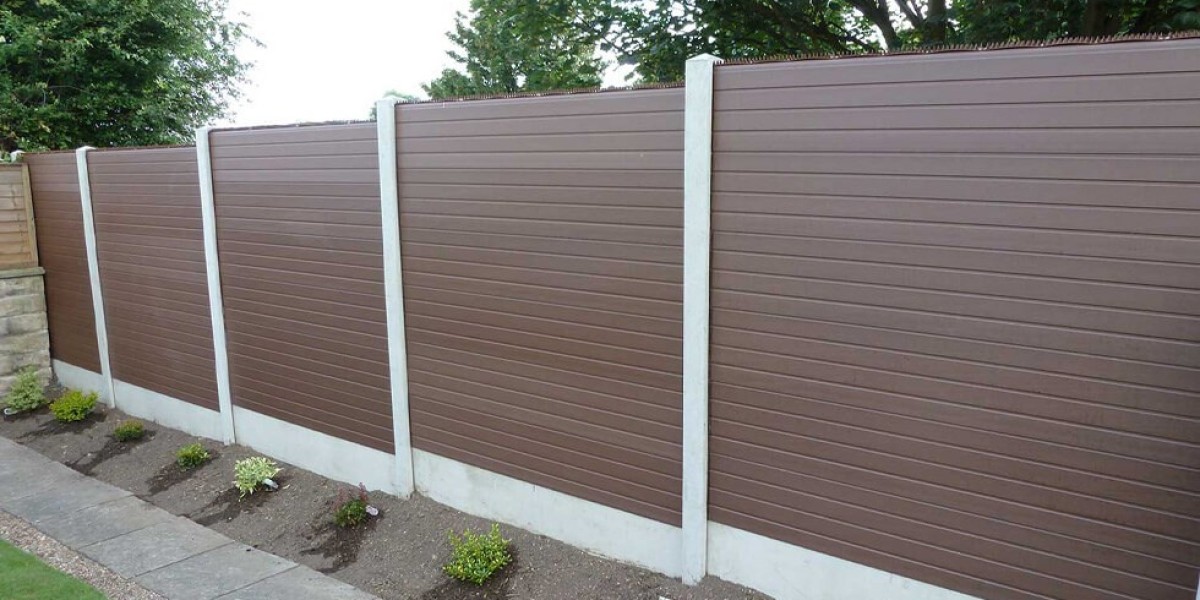As homeowners become more eco-conscious, many are looking for ways to make their properties more sustainable. One of the easiest ways to contribute to a greener environment is by choosing eco-friendly fencing options. Whether you're building a new fence or replacing an old one, there are numerous environmentally friendly choices available that not only look great but also reduce your carbon footprint. In this guide, we will explore some of the best eco-friendly fencing options and provide tips on selecting the right one for your property.
Why Choose Eco-Friendly Fencing?
Eco-friendly fencing options help reduce waste, conserve natural resources, and support a sustainable lifestyle. Traditional fencing materials like treated wood or vinyl can have a negative impact on the environment, both in terms of production and disposal. On the other hand, eco-friendly materials offer long-term benefits such as durability, energy savings, and minimal environmental impact.
By opting for eco-friendly fencing, homeowners can contribute to a healthier planet while maintaining the functionality and aesthetic appeal of their property.
Types of Eco-Friendly Fencing Options
There are several eco-friendly fencing options available that can complement your outdoor space. Let’s take a closer look at some of the most popular materials for building an environmentally sustainable fence.
1. Bamboo Fencing
Bamboo is one of the most eco-friendly materials for fencing. It’s a fast-growing plant that requires minimal water and no pesticides. Bamboo fences are durable, versatile, and can be used in various climates. Unlike traditional wood, bamboo doesn’t require extensive harvesting, and it regenerates quickly, making it a renewable resource.
Bamboo fences are also aesthetically pleasing and can create a natural, tropical look for your property. Plus, bamboo is lightweight and easy to work with, making installation simple and efficient.
2. Recycled Wood Fencing
Recycled wood is an excellent option for an eco-friendly fence. By repurposing old wood, homeowners can reduce the demand for new timber, thus saving trees and natural resources. Recycled wood is usually sourced from old barns, warehouses, or other structures that are being dismantled.
Recycled wood fences have a rustic, charming appearance and offer great durability. Plus, they have the added benefit of being a sustainable option without compromising on style. If you’re looking for an eco-friendly fence that adds a touch of personality to your landscape, recycled wood is a fantastic choice.
3. Vinyl Fencing Made from Recycled Materials
While traditional vinyl fences aren’t eco-friendly, vinyl fences made from recycled materials can be a sustainable choice. These fences are made from recycled plastic and other materials, helping to keep waste out of landfills. Vinyl fencing made from recycled content is durable, low-maintenance, and resistant to weather damage, meaning it will last for years with minimal care.
Additionally, vinyl fences are available in a wide range of colors and styles, making them a versatile option for homeowners. They don’t need painting or sealing, and they won't rot, warp, or fade over time, which means they are a long-lasting investment.
4. Composite Fencing
Composite fencing is made from a blend of recycled wood fibers and plastic, which makes it an eco-friendly option. It provides the look of wood with the durability and low-maintenance benefits of plastic. The materials used in composite fences are often sourced from recycled content, making it a sustainable choice for those who want an environmentally responsible option.
Composite fences are resistant to pests, rot, and fading, meaning they won’t require frequent replacements. Additionally, they come in a variety of colors and textures, allowing homeowners to create the perfect fence for their outdoor space.
5. Living Fences (Hedge or Shrub Fencing)
Living fences are an organic and natural way to create a barrier around your property. Using hedges, shrubs, or climbing plants like ivy, living fences offer privacy and aesthetic appeal. They help reduce carbon dioxide and provide habitat for birds and insects, contributing to a healthy ecosystem.
Living fences may require some maintenance, such as trimming and pruning, but they offer a unique and environmentally friendly way to define your space. They also provide natural beauty and can add a sense of tranquility to your landscape.
6. Stone or Rock Fencing
Stone and rock fences are durable, natural, and often require little maintenance. When properly constructed, they can last for decades, if not longer. Unlike other types of fencing that may need regular repairs or replacements, stone fences are incredibly resilient to weather conditions.
In addition, stone is a sustainable option if sourced locally, as it doesn't require extensive transportation or manufacturing. While stone fences may come with a higher initial cost, their long lifespan and low-maintenance requirements make them a worthwhile investment.
How to Choose the Right Eco-Friendly Fence for Your Property
Choosing the right eco-friendly fence involves considering several factors, including your property’s size, your budget, and the local climate. Here are some tips to help you make the best choice:
1. Consider Your Budget
While eco-friendly fences can save you money in the long run due to their durability and low maintenance, they may come with a higher upfront cost. It’s important to assess your budget and weigh the initial investment against the long-term savings. For example, while stone fencing may be more expensive initially, it may require very little upkeep over time.
2. Evaluate the Climate
Different materials work better in different climates. For example, bamboo fencing is ideal for warm, tropical climates, while composite fencing is more suited for areas with varying weather conditions. Consider the weather patterns in your region to ensure that the fence you choose will hold up well over time.
3. Think About Maintenance
Some eco-friendly fences, such as composite or vinyl, require very little maintenance. Others, like wood or living fences, may need more frequent care to keep them in good condition. If you’re looking for a low-maintenance option, composite or vinyl fencing made from recycled materials may be the best choice.
4. Aesthetic Appeal
Your fence should complement the aesthetic of your property. Whether you prefer the natural look of bamboo or the sleek appearance of composite, ensure that the material you choose aligns with the overall design of your home and landscape.
5. Local Regulations
Before installing an eco-friendly fence, check with your local authorities to ensure that the materials and designs you are considering comply with any zoning or building regulations. For instance, some areas may have restrictions on the height or style of fences.
Conclusion
Incorporating eco-friendly fencing options into your property is a great way to enhance the appearance of your outdoor space while contributing to environmental sustainability. With options like bamboo, recycled wood, composite, and stone, there are a variety of materials that are not only durable but also minimize your ecological impact.
If you're in Middletown, Delaware, or surrounding areas, including Maryland, New Jersey, and Pennsylvania, JPM Home Services is here to help you select and install the perfect eco-friendly fence for your home. Their team of experts is ready to assist you with finding the ideal solution for your needs. Call them today at (302) 598-6297 to get started on your eco-friendly fencing project.
FAQ's
1. Are eco-friendly fences more expensive than traditional fences?
Eco-friendly fences can have a higher initial cost, but they tend to last longer and require less maintenance, which can save you money over time.
2. Can I build a living fence in my backyard?
Yes, living fences made from hedges or shrubs are a great option for creating a natural, eco-friendly barrier around your property.
3. What is the most durable eco-friendly fence material?
Stone or rock fences are highly durable and can last for decades with little to no maintenance.
4. Are composite fences made from recycled materials?
Yes, many composite fences are made from a combination of recycled wood fibers and plastic, making them an eco-friendly option.
5. How long does a bamboo fence last?
Bamboo fences can last for many years, especially if properly maintained. However, they may require occasional treatment to prevent damage from pests or weather.









